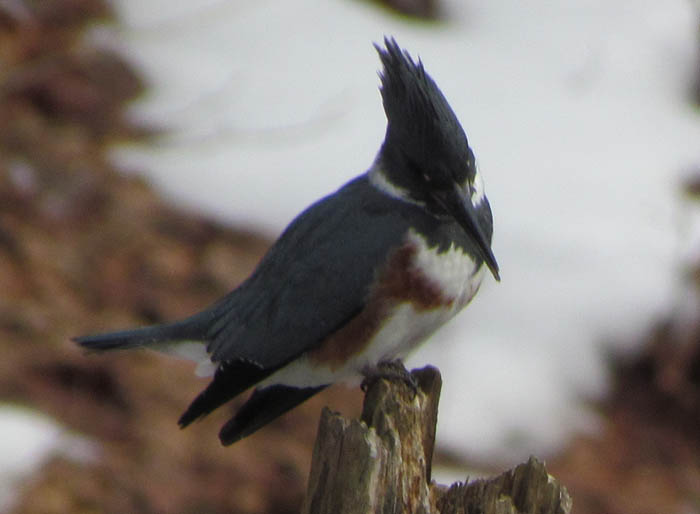The kingfisher actively hunts for small fish by perching on limbs over the water. When it spots a fish, it leaves its post and hovers over the water until it plunges in after its prey.
After snapping up a fish with its bill, the bird takes it back to its perch, where it stuns the fish by beating it against a branch or tree trunk before gulping it down.
Somewhat larger than a pigeon, they can grow up to 13 inches long. Belted Kingfishers have a large, shaggy crest and a long, heavy beak – causing them to look rather top-heavy.
This bird is a female. Belted Kingfishers are unusual in that females are more colorful than males, which lack the rust colored markings.
They are often first detected by their distinctive dry, rattling call. They do not hesitate to scold any invader who enters their hunting territory – including humans. I discovered this particular bird’s territory on the Erie Canal Towpath last Summer; I can usually find her there whenever I visit the area.
Water is not only their resource for obtaining food, but it can provide an escape route as well. A trick Belted Kingfishers use to avoid being caught by hawks is to dive into the water at the last minute.
These birds are solitary except during breeding season, when the male and female will dig a tunnel into a mud bank. The tunnel, which can be up to eight feet long, has a small chamber at the end. Belted Kingfishers sometimes share their tunnel with swallows, which make small “rooms” off of the tunnel’s “main hallway.”
With its brushy crown, energetic flight, and piercing call, the Belted Kingfisher seems to have an air of royalty as it patrols the shoreline of its domain.








